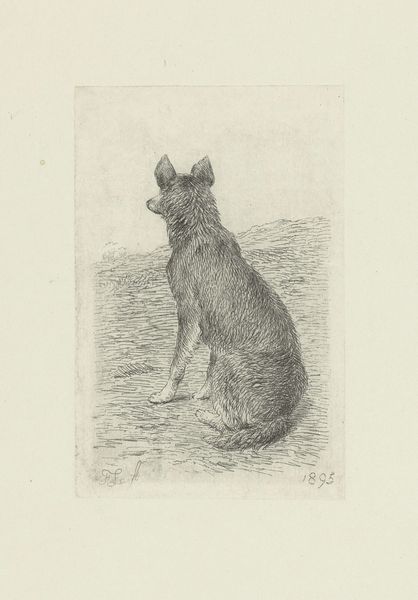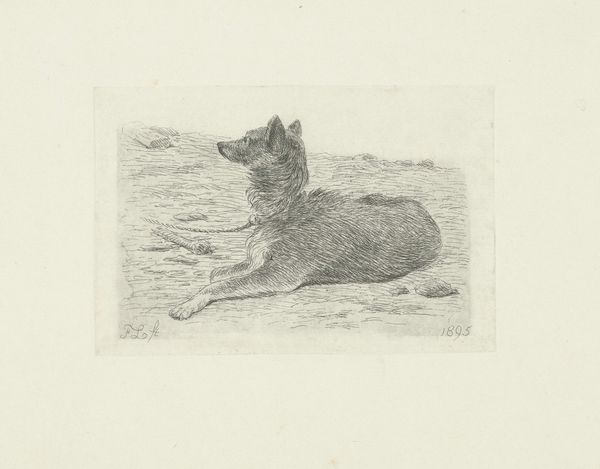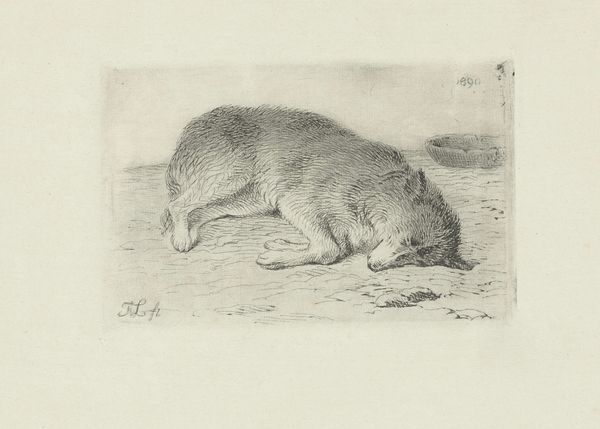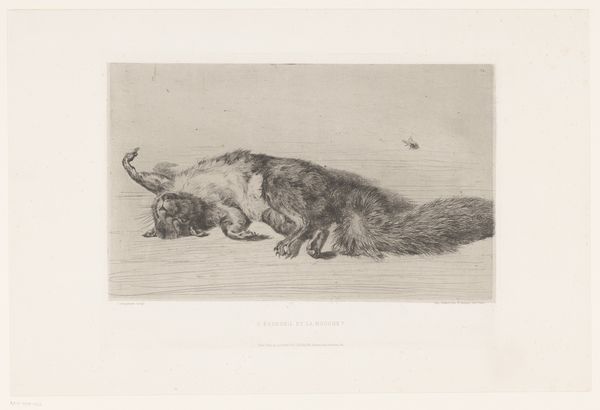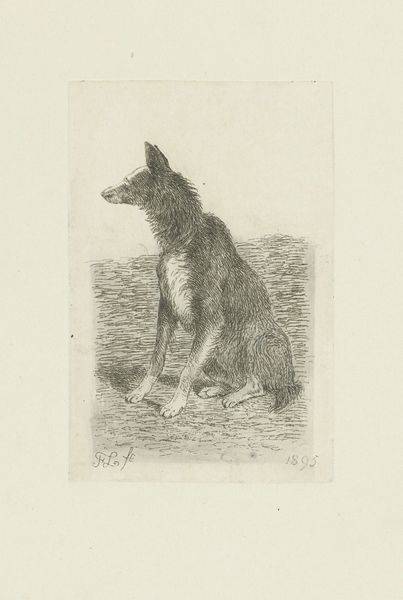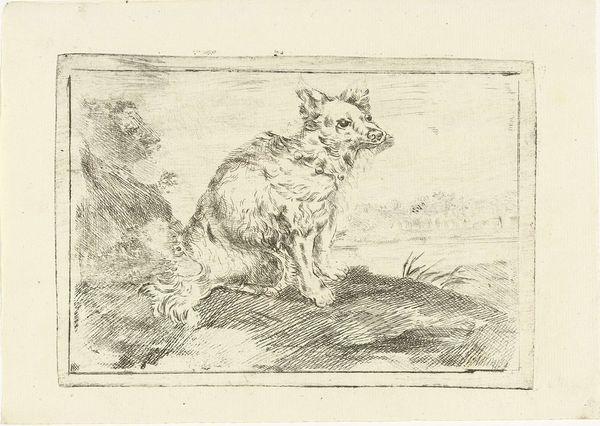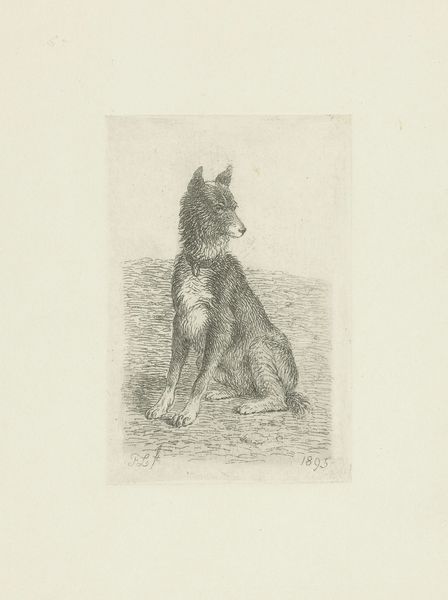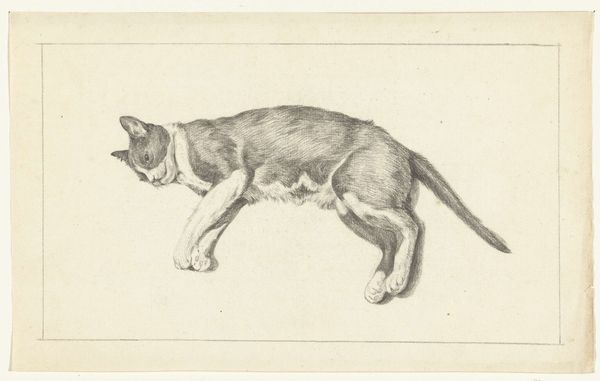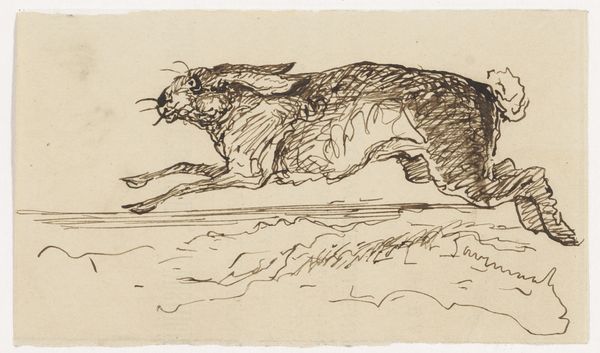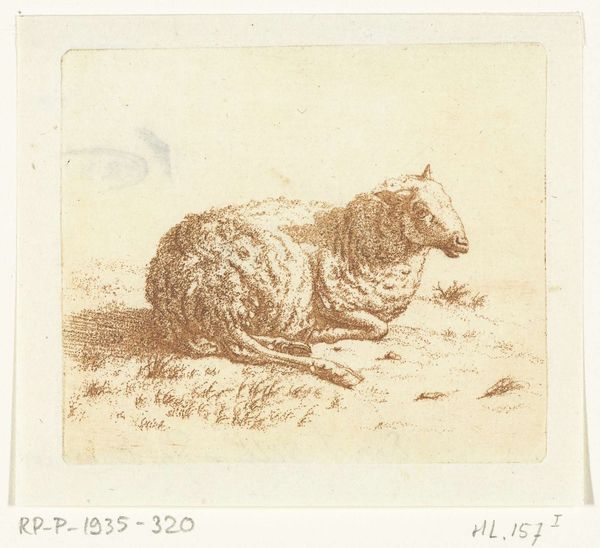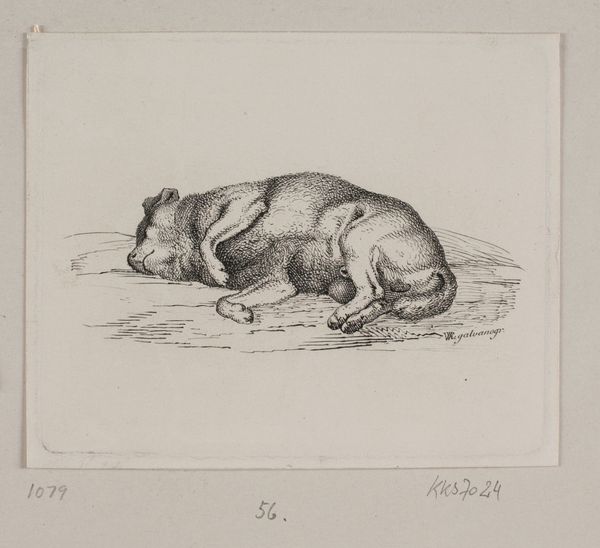
drawing, etching, ink, pencil
#
pencil drawn
#
drawing
#
animal
#
etching
#
pencil sketch
#
dog
#
landscape
#
etching
#
ink
#
pencil drawing
#
pencil
#
line
#
realism
Dimensions: height 79 mm, width 120 mm
Copyright: Rijks Museum: Open Domain
Editor: So, here we have Frans Lebret's "Liggende hond van opzij gezien," created in 1895. It’s a lovely drawing done with pencil and ink, it seems. The quiet stillness of the dog strikes me. How would you interpret this work? Curator: This image resonates with the symbolic weight of domesticated animals through history. The dog, eternally vigilant, a symbol of loyalty but here, also, of confinement, given its chain. What emotions does the posture evoke for you? Is it rest, or resignation? Editor: I initially saw it as rest, but the chain definitely adds a layer of resignation, or maybe even melancholy? What do you think Lebret was trying to convey with that symbol? Curator: The chain represents not only physical constraint but also the dog’s role within the domestic sphere—a servant, a guardian, always tethered. Consider how artists use animals to mirror societal values or anxieties. The etching style itself contributes to this mood. Editor: The etching gives it a faded, almost dreamlike quality, making the scene feel distant in time. It's interesting how something so simple can evoke such complex feelings. Do you see any other layers of meaning beyond the obvious domesticity? Curator: Consider the gaze – averted, thoughtful. Is the dog contemplating freedom, duty, or simply the next meal? Its placement in the landscape links it to broader themes of nature versus culture, wildness tamed. It prompts reflections on freedom, loyalty, and the narratives we project onto animals. Editor: It's fascinating to consider all the potential interpretations. I’ll never look at a simple dog drawing the same way again. Curator: Exactly. Images are never just images; they carry generations of symbolic meaning and emotional weight. They echo in our cultural memory.
Comments
No comments
Be the first to comment and join the conversation on the ultimate creative platform.
